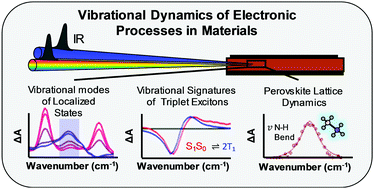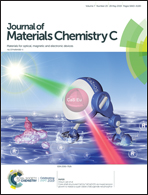Structural origins of the electronic properties of materials via time-resolved infrared spectroscopy
Abstract
Time-resolved mid-infrared (TRIR) spectroscopy offers new opportunities to investigate how the molecular and structural properties of optoelectronic materials influence their electronic and transport states. This capability emerges from the ability to measure low energy electronic transitions in the mid-infrared that are related to delocalized states in materials and to simultaneously detect the vibrational properties of the materials that influence those states. Furthermore, the ability to simultaneously measure electronic and vibrational transitions in materials offers unprecedented opportunities to correlate structural dynamics of materials with their electronic and transport properties. These capabilities are introduced by first describing the basic principles of TRIR spectroscopy used to examine electronic processes in materials. Then, several applications of TRIR spectroscopy are described in which measurements of the vibrational spectra of electronic excited states are probed as a means to correlate the structural properties of materials with the delocalization of their electronic states. In one example, exciton localization mechanisms in organic semiconductors are probed through vibrational spectra of the molecules in their excited states and correlated with their crystalline packing arrangements. Another example highlights the use of TRIR spectroscopy to examine singlet fission reaction dynamics through a combination of low energy electronic transitions and the vibrational spectra that are unique to the electronic states involved in the reaction. Finally, the use of TRIR spectroscopy to investigate charge carrier localization mechanisms in lead-halide perovskites is described, followed by an outlook of future applications of the technique in optoelectronic materials research.

- This article is part of the themed collection: Recent Review Articles


 Please wait while we load your content...
Please wait while we load your content...